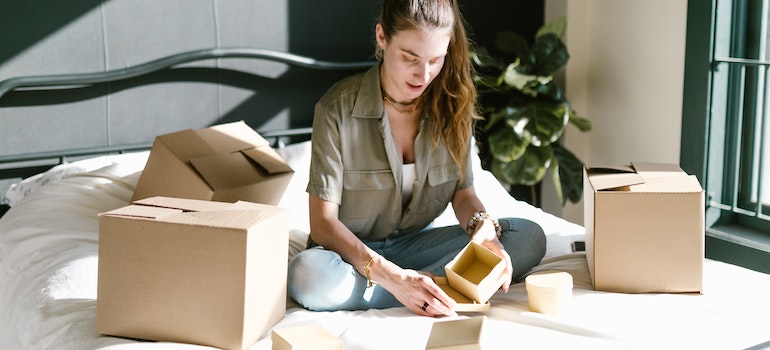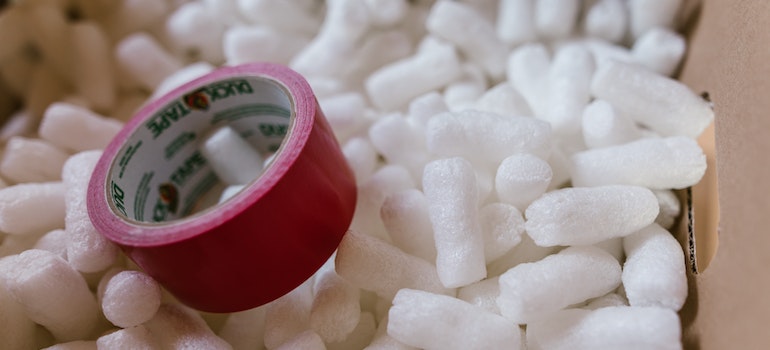The Art of Labeling: How to Sort Moving Boxes Efficiently?
You’ve just completed a marathon packing session and every possession you own is nestled neatly in its box. But wait! There’s one critical step you might have overlooked – labeling. It may seem simple to sort moving boxes, but it’s crucial, trust us But fear not! This blog post is your guide to mastering the art of labeling moving boxes efficiently. So, put that permanent marker aside for now, and join Best Cross Country Movers as we explore how to make your move smoother than ever. Whether you’re moving cross-country or just a few blocks away, the secret to an organized move lies in the power of a well-labeled box. So, get ready, because we’re about to embark on a labeling extravaganza!
The Labeling Basics: Where to Start?
Ah, the basics of labeling. Where do we even begin? Before you worry about the specifics, let’s take a bird’s-eye view of what should go on your labels. Each box label should serve as a mini-directory, guiding you and your movers through three crucial pieces of information:
- The designated room
- The box contents
- Handling instructions

First off, it’s crucial to mention the destination room of each box. ‘Kitchen’, ‘master bedroom’, ‘garage’, or ‘home office’ are a few examples. Now, why is this important? Picture this: You’re standing amidst stacks of boxes in your new home. Your back is already aching from the move. The last thing you need is to lug a heavy box up two flights of stairs, only to realize it belongs downstairs in the basement. By clearly labeling each box with its destined room, you empower anyone helping with the move to place each box correctly from the get-go.
The second component of a well-rounded label is a brief description of the contents. Now, there’s no need to list every single item. A general summary will do. For example, ‘cookware’ tells you that the box belongs in the kitchen and likely contains pots, pans, and baking trays. ‘Winter clothes’, on the other hand, indicate a box that’s not immediately essential if you’re moving in the summer. This allows you to prioritize your unpacking process more efficiently.
Lastly, comes the handling instructions. Moving is a delicate dance, especially when it involves items that can easily break or get damaged. If a box is teeming with grandma’s antique china or your collection of fragile crystal figurines, do make it known. Write ‘fragile’, ‘handle with care’, or ‘this side up’ in big, bold letters. It’s not just about cautioning movers, it’s also a reminder for you during the unboxing process.
Essential tools: What do I need?
Before embarking on your journey to sort moving boxes, arm yourself with the right tools. Here’s your labeling toolkit: a set of permanent markers in various colors, quality labeling tape, and plain labels or sticker paper. Investing in high-quality permanent markers is crucial. You don’t want your labels smudging or fading. Ensure you get a variety of colors if you’re going the color-coding route. Additionally, opt for strong labeling or packing tape that will stick well and withstand the rigors of moving. And lastly, if you’re not writing directly on the box, get plain labels or sticker paper for jotting down your labeling information.

Beyond the Basics: Advanced Labeling Techniques
Great work so far! You’ve got the basics of labeling under your belt. Now, let’s venture into some advanced techniques that can transform your moving experience. Welcome to the dynamic duo of color coding and number systems!
Let’s tackle color coding first. This technique hinges on assigning a specific color to each room in your new home. Imagine the kitchen as yellow, the bathroom as blue, and the master bedroom as green. How you designate these colors is entirely up to you. You can then use colored markers or colored tape to label your boxes accordingly.
It may sound simple, but the power of color coding is immense. It creates an immediate visual cue for everyone involved in the move. The moment you or your movers lay eyes on a box, you’ll instantly know where it belongs. It will make unpacking and organizing after the move much easier. To take this technique a step further, consider placing a corresponding colored sticker on the door or entrance of each room in your new home. This way, it’s a cinch to match the color on the box with the color in your new place.
How to use a numbering system to sort moving boxes efficiently?
Now, let’s dive into the world of number systems. This technique involves assigning a unique number to each box you pack. Alongside this, you maintain a comprehensive inventory list that details the contents of each numbered box. For instance, box #1 might be ‘Kitchen: Utensils’, while box #17 might be ‘Kids Room: Toys’. This method requires a bit more effort upfront, but the clarity it brings during the unpacking process is worth its weight in gold. No more rummaging through numerous boxes to find the coffee maker for your morning brew. Simply refer to your inventory list, locate the box number that contains the coffee maker, and voila – your morning is saved!

Combining the color-coding technique with a number system can provide an exceptional level of organization. You’ll not only know exactly where each box goes, but you’ll also know what each box contains. Not only that, but the numbering systems can help create a long-lasting home inventory list that can help you manage your home insurance. Remember, these advanced techniques aim to streamline the moving process, reducing stress and confusion. So why not invest a little extra time in your prep stage and enjoy a more relaxed, efficient move? The power of labeling awaits you!
Conclusion: Ready, Set, Label!
There you have it, folks! The art of labeling moving boxes decoded. Remember, the goal here is to make your move as efficient and stress-free as possible. It may take a little extra time and effort to sort moving boxes but it can help with any post-move anxiety you might feel. Additionally, your future self, standing in your new home, will thank you. Now that you’ve grasped the ABCs of labeling, it’s time to put these skills to the test. You’re officially ready to transform from a packing beginner into a labeling guru. So, grab those markers, dust off those boxes, and let the labeling extravaganza begin! Here’s to a perfectly organized, easy-breezy move. Happy labeling, and even happier moving!





